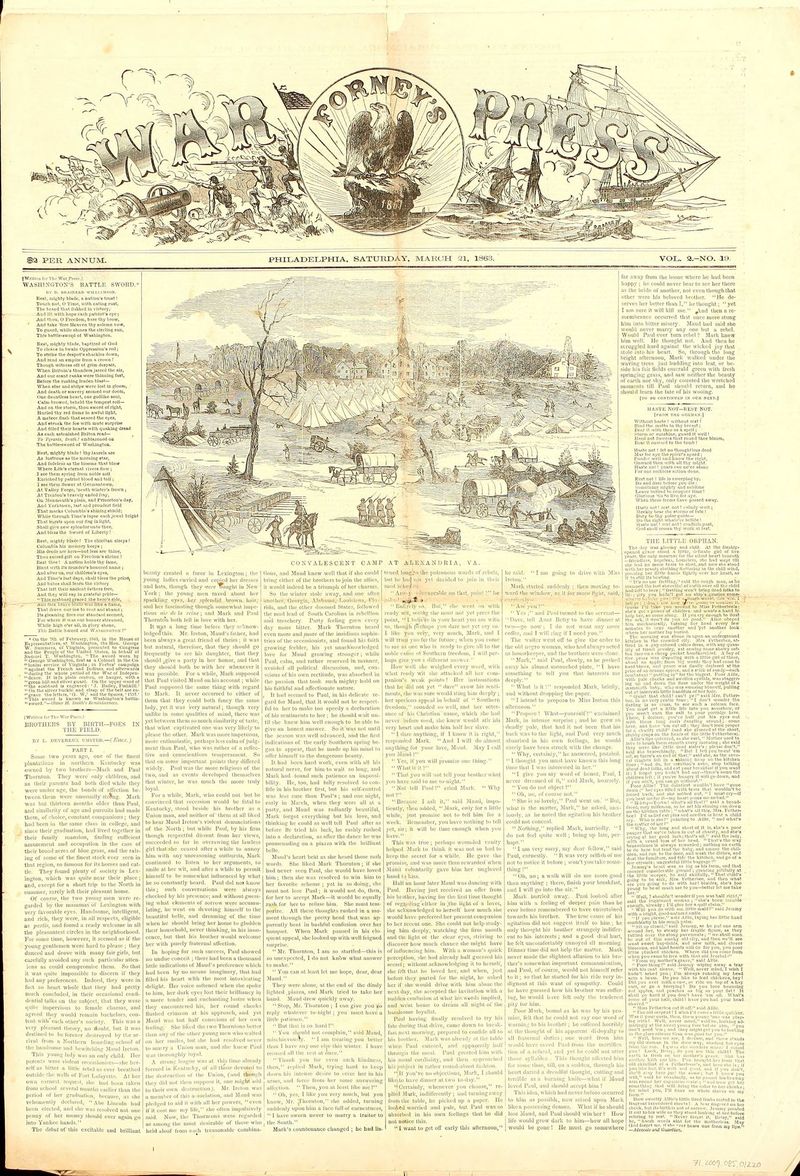
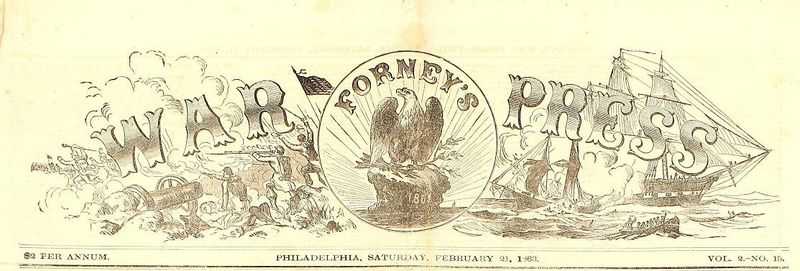
Description
Forney’s War Press: A Civil War Chronicle
- 1817, September 30: John W. Forney is born in Lancaster, Pennsylvania.
- Around 1830: Forney, age 13, leaves school to work and support his family.
- Around 1833: Forney becomes a printing apprentice at the Lancaster Journal.
- Early 1840s: Forney becomes the owner and editor of the Lancaster Journal.
- 1845: Forney is appointed surveyor of the port of Philadelphia due to the influence of James Buchanan, then Secretary of State.
- 1840s: Forney sells his Lancaster paper and becomes the editor and owner of the Philadelphia Pennsylvanian.
- 1848: Forney loses his surveyor position after the Democrats lose the presidency and relocates to Washington, D.C. He becomes an editorial writer for the Washington Daily Union.
- 1851: Forney is elected Clerk of the United States House of Representatives.
- Mid 1850s: Forney purchases partial ownership in the Union and uses his role as Clerk to secure lucrative government printing contracts for the paper.
- 1855-1856: Forney presides over a contentious two-month House speakership contest as Clerk.
- 1856: Forney resigns as Clerk to campaign for James Buchanan’s presidential election and his own election to the U.S. Senate, failing to win a Senate seat.
- Post 1856: Forney establishes a newspaper in Philadelphia called the Press.
- Late 1850’s/1860: Forney breaks with Buchanan over proslavery policies and printing contracts, shifting his allegiance to the Republican party.
- 1860: Forney is once again elected Clerk of the House.
- 1861, March: Abraham Lincoln becomes president; Forney gains enough votes with Lincoln’s help to become Secretary of the Senate.
- 1861: Forney establishes the Washington Sunday Chronicle.
- 1862: At Lincoln’s suggestion, Forney converts the Sunday Chronicle into a daily newspaper. It gains wide distribution to the Army of the Potomac.
- 1863: Forney’s Press newspaper in Philadelphia becomes known as Forney’s War Press. Thirty issues are published in 1863 (specific dates are given as: January 3, 10, 31: February 21, 28: March 14, 21: April 18, 25: May 23: June 13, 20, 27: July 4, 18, 25: August 8, 15, 22, 29: September 26: October 10, 17, 24, 31: November 14, 21, 28: December 5, 19). The issues include reports from war correspondents, casualty reports, poetry and humor.
- 1863, October 31: The War Press issue contains articles on: “Rebel deserters in the mountain of North Carolina,” the Whiskey Rebellion, Henry Ward Beecher, the Slave Power and England, Contrabands, Emancipation, colored schools, recruiting of African-Americans, Freedmen in Virginia, the raid on Pennsylvania, Governor Curtin, Lee’s movement, and the war in Virginia, among other subjects.
- Post-Civil War: Forney’s War Press returns to being called The Press. Forney remains the head of it until selling it in the 1870s.
- Around 1880: The Press ceases publication.
Cast of Characters
- John W. Forney: Born in 1817, he was a prominent newspaper publisher and political figure. He began his career at the Lancaster Journal, eventually becoming its owner and editor. He held positions such as surveyor of the port of Philadelphia, Clerk of the U.S. House of Representatives, and Secretary of the Senate. He founded the Philadelphia Press (later Forney’s War Press) and the Washington Daily Chronicle. He was initially associated with the Democratic Party but later switched to the Republican Party. He used his newspapers to shape public opinion on political and military issues, especially during the Civil War.
- James Buchanan: A prominent figure from Lancaster, Pennsylvania. He served as U.S. Senator, Secretary of State and later became the 15th President of the United States. Forney developed close ties with Buchanan, who helped him to obtain his position as the surveyor of the port of Philadelphia. Forney later broke with Buchanan over the president’s pro-slavery policies.
- Abraham Lincoln: The 16th President of the United States. Lincoln helped Forney become the Secretary of the Senate and encouraged Forney to turn the Washington Sunday Chronicle into a daily newspaper to support the Union cause.
- Andrew G. Curtin: The Governor of Pennsylvania during the Civil War. He was given “A Worthy Tribute” in the October 31, 1863 issue of Forney’s War Press and is mentioned for his role in the Gettysburg campaign.
- Henry Ward Beecher: A prominent abolitionist clergyman. He is mentioned in the October 31, 1863 issue of Forney’s War Press as having given a speech at Manchester, England.
- General Schofield: A Union general. He is mentioned in connection to instructions given to him by President Lincoln, referenced in the October 31, 1863 issue of Forney’s War Press.
- Mr. Vallandigham: A leading Peace Democrat in Ohio. He is mentioned in the October 31, 1863 issue of Forney’s War Press concerning his defeat in Ohio’s elections.
- Mr. Sumner: A U.S. Senator from Massachusetts and an abolitionist. He is mentioned in the October 31, 1863 issue of Forney’s War Press with reference to a speech he gave.
- John Minor Botts: A Unionist politician from Virginia. He is mentioned in connection with the Rebel Secretary of State in the October 31, 1863 issue of Forney’s War Press.
- Hershel V. Johnson: A former Confederate politician. He is mentioned in the October 31, 1863 issue of Forney’s War Press due to a “Remarkable Speech” he gave.
- General Rosecrans: A Union general. He is mentioned in the October 31, 1863 issue of Forney’s War Press in connection with his role at Cincinnati and with his potential replacement.
- General Burnside: A Union general. His Official Dispatch is mentioned as being included in the October 31, 1863 issue of Forney’s War Press regarding the Fight at Blue Springs, Tenn.
This timeline and cast of characters provide a detailed look into the world surrounding John W. Forney and his influential newspaper, Forney’s War Press, during the Civil War.
Civil War: Forney’s War Press Newspaper 1863
A total of 240 pages of the 1863 issues of Forney’s War Press are included in this collection.
Forney’s War Press was a periodical focused on reporting news from the Civil War. This weekly publication, printed in Philadelphia, Pennsylvania, featured illustrations, dispatches from war reporters, lists of casualties, poems, and humorous pieces.
John W. Forney, the publisher of War Press, was born in Lancaster, Pennsylvania in 1817. He started his career in the publishing industry as an apprentice at the Lancaster Journal, eventually becoming its owner and editor. He also held positions as the Clerk of the United States House of Representatives from 1851-1856 and 1860-1861, and as the Secretary of the United States Senate from 1861-1868.
Each edition of the paper consisted of eight pages. The newspaper’s title banner was a detailed drawing that included an eagle, a warship, a cannon, and soldiers engaged in combat.
This compilation contains 30 editions from the year 1863. The specific dates of these issues are: January 3, 10, 31; February 21, 28; March 14, 21; April 18, 25; May 23; June 13, 20, 27; July 4, 18, 25; August 8, 15, 22, 29; September 26; October 10, 17, 24, 31; November 14, 21, 28; and December 5, 19. The newspaper published on October 31, 1863, featured a drawing above its title that depicted “Rebel deserters in the mountains of North Carolina.” This edition contained several stories, including one about the Whiskey Rebellion in 1794. Another article reported on Henry Ward Beecher’s visit to Manchester. The paper also covered topics like the influence of slavery on England, the status of escaped slaves, the issue of emancipation, and the establishment of schools for Black children in New Orleans. Further articles discussed the recruitment of Black soldiers in Maryland and the situation of freed slaves in Virginia. The issue also reported on the recent raid in Pennsylvania, and Governor Andrew G. Curtin’s role in the Gettysburg campaign. The paper included praise for Governor Curtin, an analysis of the Confederate perspective on Lee’s advance, and information on General Lee’s strategies. Coverage extended to the war in Virginia, including the crossing of the Rappahannock River by Confederate troops, and a cavalry clash. There was also a review of the Army of the Potomac’s recent actions. The paper included an article on Spanish Democrats and their views on President Lincoln, as well as a letter from President Lincoln to the Missouri delegation. Instructions to General Schofield were also published, along with an analysis of the Democratic leaders’ political approach. The issue also covered a Union rally in New York, the recent riots in New York City, and Governor Seymour’s proclamation. The Ohio election was also discussed, as well as Mr. Vallandigham’s comments on his defeat. The paper printed Mr. Sumner’s speech, and an article about John Minor Botts and the Confederate Secretary of State. Also included was a summary of Hershel V. Johnson’s notable speech, the escape of Confederate prisoners from Camp Douglas, and the conditions of Union prisoners in Richmond. The paper also reported on the situation at Chattanooga, General Rosecrans’ presence in Cincinnati, and the selection of a successor for General Rosecrans. The war in the Southwest was covered, including operations near Corinth, the Kentucky Raid, and the battle at Blue Springs, Tennessee. Finally, the edition contained General Burnside’s official report. John Forney was born in Lancaster, Pennsylvania on September 30, 1817. At thirteen, he left school to help his family financially. Three years later, he began an apprenticeship at the Lancaster Journal’s printing office. By his early twenties, this clever and ambitious young man had become the newspaper’s editor and owner. During this time, he formed a strong relationship with James Buchanan, a prominent U.S. Senator from Lancaster. In 1845, after Buchanan became Secretary of State under President James K. Polk, he helped Forney secure a desirable position as surveyor of the port of Philadelphia. For the next twenty-five years, Forney simultaneously worked in publishing and held government positions, a common practice at the time.
Upon moving to Philadelphia, Forney sold his Lancaster paper and became the editor and owner of the Philadelphia Pennsylvanian. When the Democrats lost the presidency in 1848, Forney lost his surveyor job and moved to Washington, D.C., where he became an editorial writer for the Washington Daily Union. In 1851, he achieved his long-term goal of being elected Clerk of the House. A few years later, he bought a share of the Union. As Clerk, he used his influence with House leaders to secure lucrative contracts for the Union to print House documents. (Controversy surrounding these printing contracts eventually led Congress to create the Government Printing Office.) Forney’s most notable role as Clerk was his successful management of a bitter two-month House speakership battle in 1855-1856. In 1856, Forney left his House seat to campaign for James Buchanan’s presidential bid and to pursue a Senate seat in Pennsylvania himself. Although Buchanan won the presidency, Forney was unsuccessful in his Senate campaign, so he requested a prominent position within the new administration. When Buchanan was unable to find a suitable role for him due to political obstacles, Forney returned to Philadelphia and founded a new newspaper called the Press. He soon became disillusioned with Buchanan because of the president’s pro-slavery stance and his failure to secure government printing contracts for Forney. By 1860, as Buchanan’s unsuccessful policies contributed to the South’s secession and the decline of the Democratic party, Forney switched his political support to the newly formed Republican party. He was then re-elected as Clerk of the House.
Upon Abraham Lincoln’s presidency in March 1861, he assisted Forney in obtaining the necessary votes to become Secretary of the Senate. While adjusting to his new role, Forney also launched the Washington Sunday Chronicle. The next year, he followed President Lincoln’s suggestion to change the Sunday Chronicle into a daily publication. Shortly after, almost forty thousand copies of the Chronicle were being circulated to the Army of the Potomac, fulfilling Lincoln’s aim of having a newspaper that supported his administration available to the soldiers.
Forney founded a Philadelphia newspaper called the Press (sometimes referred to as the Weekly Press). During the Civil War, this newspaper became known as Forney’s War Press. Following the war, the paper reverted to its original name, and Forney remained its leader until the 1870s, when he sold it. The paper continued to be published until around 1880.
Related products
-
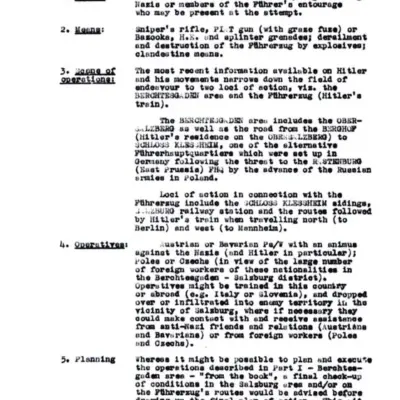
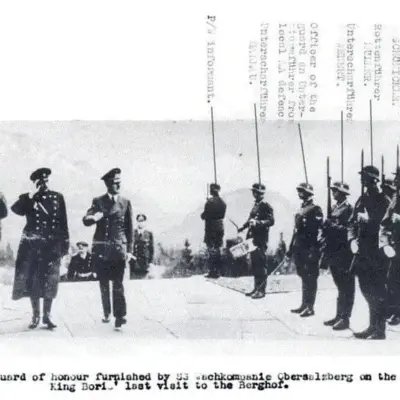
World War II: Adolf Hitler and Operation Foxley – British Assassination Plot
$19.50 Add to Cart -
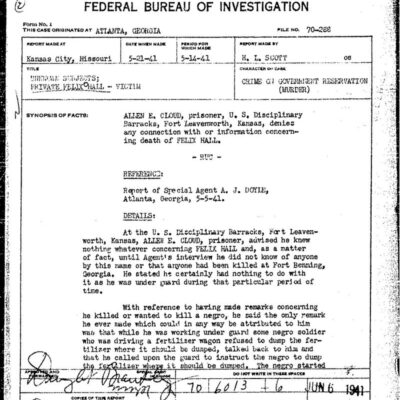
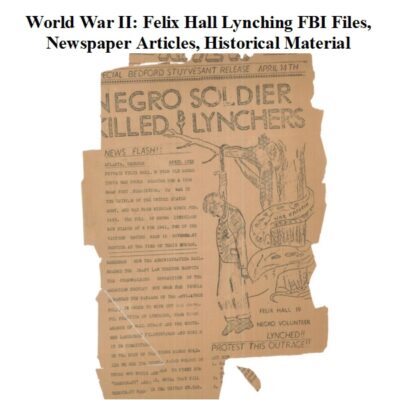
World War II: Felix Hall Lynching – FBI Files, Articles, Historical Records
$9.99 Add to Cart -
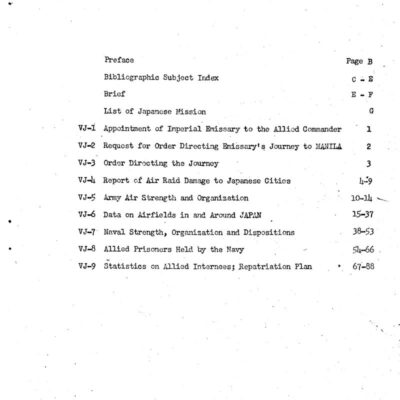
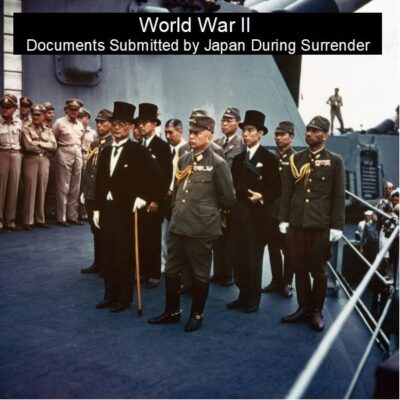
Japan’s Surrender Documents from World War II
$1.99 Add to Cart -


Operation POPEYE in the Vietnam War
$5.94 Add to Cart